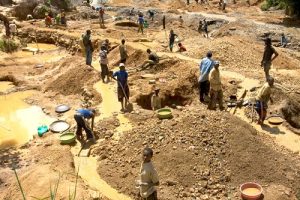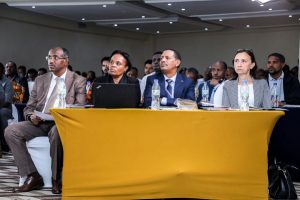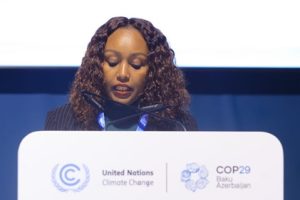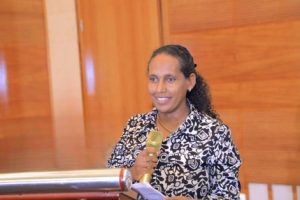
Greenhouse gases trap heat and make the planet warmer. Human activities are responsible for almost all of the increase in greenhouse gases in the atmosphere over the last 150 years. The largest source of greenhouse gas emissions from human activities in the United States is from burning fossil fuels for electricity, heat, and transportation.
Developing countries get hit with 78 percent of the cost of climate change in 2015. It will be rising to 87 percent by 2035. The industry, energy, and wealth that were long the preserve of a handful of developed countries are finally expanding rapidly in the developing world, and that’s a very good thing. But this welcome economic growth has a dangerous side effect—carbon emissions, according to the Center for Global Development.
Compared to developed countries, a much larger share of emissions in developing countries comes from deforestation. Tropical deforestation made up more than one-fifth of emissions from Latin America in 2011, nearly one-third of emissions from sub-Saharan Africa, and two-fifths of emissions from Southeast Asia, it said.
About half of total carbon dioxide emissions have been released by a handful of now-developed countries. Industrialization massively increased standards of living in countries that developed early—and hugely increased their emissions, which have only compounded with time.
However, those who are considered major emitters do not want to take responsibility and are not ready to fund green development projects in developing countries. Even though the world’s countries have had discussions for the last 28 summits and passed various decisions, they cannot change their words into actions.
On the other hand, climate change is now seriously affecting developing countries. Recurrent droughts, flooding, and so on are some of the major impacts observed in Africa, especially in the east African region.
In the COp-28 summit, where world leaders assembled together, climate financing was one of the points that received more emphasis. In the side meeting, The Horn of Africa Initiative (HoAI) recently orchestrated a pivotal high-level dialogue during COP28 in Dubai, uniting finance ministers, international organizations, civil society, and academics to confront the pressing need for bolstering the region’s resilience to climate variability while amplifying coordination and financing endeavors. The initiative is paving the way for an integrated Horn of Africa.
Under the esteemed guidance of Ethiopia’s Finance Minister and HoAI’s Chairman, the panel featured ministers from Djibouti, the Governor of Wajir Province in Kenya, the Executive Secretary of IGAD, the EU Special Envoy for the Horn, the WB Vice President for Eastern and Southern Africa, and the AfDB Director for Climate Change and Green Growth. Mrs. Boutheina Guermazi, the Director for Regional Integration for Sub-Saharan Africa, the Middle East, and North Africa, adeptly moderated insightful discussions.
In his opening address, the Chair of the Horn of Africa Initiative spotlighted Ethiopia as a trailblazing example of investing in green initiatives despite numerous challenges. With the majority of funding originating from domestic sources, Ethiopia sets an inspiring precedent.
However, he underscored that addressing climate change is a collective responsibility shared by major and minor emitters alike. The Chair emphasized the pivotal role of the private sector in the climate finance architecture, extending an invitation to the Arab Development Coordination Group, including BADEA, to join the initiative as members. The HoAI envisions welcoming new members at its 19th Ministerial Meeting in Brussels on December 15, 2024.
During the discussion, Workneh Gebeyehu, the Executive Secretary of IGAD, emphasized the concerning results of the Climate Prediction and Application Center (ICPAC), stressing that the Horn of Africa is becoming more arid and hotter.
Infrastructure and communities in the region are extremely vulnerable, particularly in borderlands where governance, fragility, and issues with natural resource management are prevalent.
Communities and infrastructure in the region are extremely vulnerable, particularly in the borderlands, where governance, fragility, and natural resource management issues predominate.
As part of its Green Legacy Initiative, Ethiopia has planted 32.5 billion tree saplings so far. The Initiative is a massive undertaking with the stated goal of planting 50 billion tree seedlings by 2026.
The executive secretary praised the country’s efforts to combat climate change, particularly through its Green Legacy Initiative, calling it an example for the East African region and beyond.
Workneh praised Ethiopia for mobilizing its resources and people to carry out the initiative. “The main reason that Ethiopia’s Green Legacy Initiative is a pioneering model for the region and others is that the country planted over 30 billion tree saplings by mobilizing its resources, with people’s effort and coordination of leadership, and without pleading for external financing.”
He noted that the country has not relied on external financing, such as from the World Bank or other countries.
Ethiopia has also been preparing billions of tree seedlings to share with neighboring countries in the East Africa region to help them combat climate change. Thus, it serves as an exemplary model for the East Africa region and beyond, he explained.
“This is a big thing. It has also been sharing it with countries in the region. Its symbolic significance is big. So this is a big example showing that there is big change by own effort, without expecting support, by mobilizing own resources.”
According to him, eight countries in the region are highly affected by climate change-induced consequences.
The region is a practical showcase of climate change-induced consequences, including floods and droughts, which have been seen over the past few years, he stressed.
Noting that many countries take various measures to combat the effects of climate change, Ethiopia is one of these countries that is doing exemplary work, he pointed out.
Ethiopia also participates in global events to mobilize support for IGAD countries, and Africa seeks climate change funds to compensate for the damage it has encountered due to climate change, he noted.
Djibouti’s Environment and Sustainable Development Minister, Mohamed A. Musa, said the Green Legacy is a great example for Africa, and Djibouti is benefiting from the initiative.
“It is a good example, and Djibouti will take this example. We will work on it. Ethiopia gave us a lot of plants. So it is a good example for Africa.”
He noted that Djibouti and Ethiopia not only enjoy relations in the transport area and electric power connectivity but also have been working on protecting the environment together.
Djibouti was also part of the Green Wall Initiative, and it also welcomes Ethiopia’s Green Legacy Initiative, he added.
The Minister of Economy and Finance of Djibouti, Illyas Dawaleh, underscored the significant impact of floods and droughts in the region. Highlighting the urgent need, Dawaleh emphasized the importance of strengthening water and agriculture systems to bolster resilience.
Annette Weber, representing the European Union, emphasized the critical role of policies and strategies in shaping the climate change and resilience agenda, urging concerted efforts to address the challenges faced by the region.
Boutheina Guermazi, the Senior Director for Regional Integration, emphasized the HoAI’s commitment to climate resilience through several programs funded by the World Bank.
Victoria Kwakwa, Vice President of Eastern and Southern Africa at the World Bank, echoed the need to scale up efforts to address the pressing climate challenges.
The Horn of Africa Initiative is a country-led regional integration platform that brings together seven countries and development partners such as the African Development Bank, BMZ, the European Union, and the World Bank.
Apart from providing emergency assistance to those exposed to climate change impacts, the major emitters should fund green development initiatives by third-world countries.
BY GIRMACHEW GASHAW
THE ETHIOPIAN HERALD WEDNESDAY 6 DECEMBER 2023





